Chartbook #45: Of Scarface & the Nobel - The Double Life of Mariel
or ... the history of a natural experiment.
The award of the Nobel Prize for Economics to Berkeley’s David Card is important because of the recognition it extends to an economist who has consistently worked on urgent questions of labour economics. Together with the late Alan B. Krueger and the two other winners, Joshua Angrist and Guido Imbens, Card pioneered the methodology of natural experiments for the precise identification of causality.
The logic of natural experiments is janus-faced. It involves using happenstance and surprise to identify the degree to which broader, “general” laws, actually operate.
Commonly “natural” experiments arise from the arbitrary regulations of administrative systems. For instance, to test whether schooling impacts wages - an issue of huge general import - you exploit the fact that the birth dates on which kids are enrolled in school create arbitrary distinctions in terms of “school age”, whilst the date at which they may leave school, is simply set by their birth date. As a result, some high-school drop outs receive more education than others and that turns out to matter for their later earning potential. They are not a very large group in the workforce, but their particular characteristics allow identification of what we think is a general effect.
It is not just the unintended consequences of administrative regulations that can be exploited. Historical events, determined by a huge and complex web of politics and history, documented through complex mechanisms of power and knowledge, also generate shocks that may be described as “natural experiments”. The Mariel boatlift is a case in point.
On April 20 1980 Fidel Castro announced that Cubans who wished to leave to the United States were free to do so. The only stipulation was that they must depart through the port of Mariel. By 31 October 125,000 people had left for Miami. In May 1980 alone, over 86,000 arrived in the US.
It was chaotic. The migrants came in small groups - 1700 boats were used altogether. In Miami the authorities were overwhelmed. Meanwhile, the refugees struggled to find places for themselves in a city, which at the time was shrouded in a discourse of crisis.
Rumors that the boatlift included thousands of inmates of Cuban prisons and mental hospitals caused a widespread “moral panic”. At least a thousand were incarcerated and shipped back by the US authorities. Contemporary news accounts reported that some 20,000 gay and queer people had fled persecution in Cuba.
Decades later the New York Times quoted a former D.E.A. agent who described the migrants as “street urchins with bad intent … Within two weeks of getting here, some of them were working for dopers, bringing in loads and doing rip-offs.”” Old stereotypes die hard.
On May 17 a three-day riot erupted in several black neighborhoods in Miami. There were plenty of local grievances that served as an explanation, but an official report tied the unrest to the competitive pressure of the Cuban refugees.
After shuffling through improvised accommodation in and around Miami, tens of thousands of refugees were shipped off to a variety of federal military facilities. By May 1980, 20,000 of the Mariel refugees found themselves concentrated at Fort Chaffee, Arkansas, triggering a second phase of the crisis.
In Arkansas the arrivals were fiercely resisted by locals and their governor, a young Bill Clinton. The ensuing riot is vividly described by the Washington Post:
"The scene would later remind one witness of the Vietnam War. “Plumes of smoke billowed high into the illuminated night sky from barracks that had been set afire”. Flames still flickered from a charred guardhouse. Whoops and fierce cries of defiance echoed across the camp. Shotgun-toting civilians in pickup trucks loomed a mile or so beyond the gate. The mood was tense and chaotic. But this wasn’t Vietnam — or Iraq in the wake of an Islamic State attack. This was Fort Chaffee, a military installation in Arkansas, on June 1, 1980, when refugees from Fidel Castro’s Cuba rioted. The refugees had been sent there at the behest of President Jimmy Carter over the vociferous objections of an Arkansas governor with quite a political future: Bill Clinton. “The White House message seemed to be: ‘Don’t complain, just handle the mess we gave you,'” former Arkansas first lady — and possible future president — Hillary Clinton wrote in her memoir “Living History.” “Bill had done just that, but there was a big political price to pay for supporting his President.”""
The option preferred by the Clintons was to screen the Cubans on an aircraft carrier and to deport the unwanted back to the US base of Guantanamo. In Arkansas, Clinton warned Carter, he was struggling to prevent “a bloodbath that would make the Little Rock Central High crisis look like a Sunday afternoon picnic.” Clinton feared that he did not have the police resources necessary to prevent murderous clashes between protesting Cubans and heavily armed Arkansas locals (visible on the road in the background of this image).
According to Clinton "There had been a run on handguns and rifles in every gun store within fifty miles of Chaffee.”
Not surprisingly, many of the Cuban arrivals preferred to take their chances living rough on the streets of Miami. As innovative work by the Michigan PhD Alexander Stephens shows, they were subject to a regime of intensive police surveillance and documentation.
In the end, approximately half the Mariel arrivals managed to establish themselves permanently in the city.
Mariel entered urban legend by way of Scarface (1983), Brian de Palma and Al Pacino’s ultra-bloody portrayal of the Miami drug wars. The film’s opening sequence is set in a recreation of “Freedom Town”, an improvised tent city settlement put up under a Miami highway overpass, which erupted in riots in the fall of 1980.
The Miami Tourist Board was so sensitive about the reputational damage from the refugee crisis that Scarface had to be filmed largely in LA.
After an initial wave of sympathy, the attitude towards the Marielitos amongst Miami’s resident Cuban population rapidly soured. Some in the established Cuban population in Miami took to referring to them disdainfully as “Castro’s animals”. Statistical data confirms that they were younger and far less educated than the typical Cuban resident of Miami.
Source: Card 1990.
Driven by the moral panics surrounding the boatlift, the administrative machinery in Miami ground on. 125,000 came in the boatlift. As work by Alexander Stephens shows, in the final round up of Marielitos over the winter of 1980-1981 in the Miami area, 150 homeless people were stripped of their immigration parole. Intensive policing of this population documented a few hundred cases of unusual violence or dysfunction, and documented them so thoroughly that even 35 years later they are ready for the New York Times to regurgitate as emblems of the “Marelito crisis”.
The occasion was the normalization of relations with Cuba under President Obama. As the New York Times hastened to remind its readers, this reopened the Mariel question. Hundreds of the Mariel arrivals who had since fallen foul of the law face deportation back to Cuba. With the help of retired ex-cops in Miami, intrepid Times reporters traced down one paroled murderer to Illinois. Since the man in question refused to respond to their enquiries, the last word on this “bad hombre” (sic), was left to the detective, a Mr. Diaz: “He was vicious,” he said. “He was bad news. They should ship him back.”
As Stephens points out in this sharp piece, January 2017 was a good moment to revive 1980s visions of American carnage.
*********
How then do we get from Mariel as a violent emblem of America’s toxic relations with Cuba and the Caribbean, to the Sveriges Riksbank Prize in Economic Sciences in Memory of Alfred Nobel - aka the “Nobel” prize in economics?
What lured David Card onto this fraught terrain, what makes the Mariel boatlift irresistible, is a question of methodology, precisely the question highlighted by the 2021 Nobel awards.
Economists don’t like complex entangled histories. They don’t like them because they make it hard to cleanly identify causation.
Judging the impact of the large migrant flows from Mexico to the US is complex because the migrants themselves are heavily influenced by news about the labour market situation in the US. Migrants will not go to places where the labour market is so slack that their arrival would tend to depress wages severely and leave them unemployed. So, empirical tests will struggle to find large impacts of migration on unemployment and wages. But that does not mean that all else being equal the migration → wage effect is not real. It may simply be obscured by the fact that there is another causal loop running at the same time from wages and unemployment to migration flows.
One can cut through this complexity if one can find a moment - a natural experiment - in which those feedback loops are not operating.
Natural experiments are paradoxical - or perhaps dialectical. They are moments when out of complex and entangled social reality, events or interactions emerge that seem truly exogenous and random and thus allow the clear identification of what is cause and what is effect. Thesis-antithesis.
In the hands of Card, the Mariel boatlift became such a moment. The Miami labour market had been absorbing migrants from Latin America and the Caribbean for years. But, Castro’s decision in the spring of 1980 to release the flow of refugees to the United States was unrelated to the state of the Miami labour market.
It was a “natural” experiment, courtesy of the Cold War.
The inflow of migrants from Cuba and Haiti raised Miami’s workforce by 45,000 workers or 7 percent in a matter of months. Such an increase in the supply of labour ought - according to the precepts of neoclassical economic theory - to have shifted the price at which the labour market cleared in a downward direction. More workers → lower wages. And this effect ought to have been particularly pronounced at the bottom end of the labour market.
What David Card’s famous, 1990 paper on the Mariel shock in Miami demonstrated, was that this had not happened.
The average wages of workers in Miami were stable in the early 1980s, despite a national trend in the downward direction. This was true for white and black workers. The same was true for non-Cuban Hispanics who did relatively well in Miami compared to other cities.
The story for Cuban workers was more complicated. Their unemployment rate surged and their wages fell, as standard theory would predict. But the question is why? One can only speak of a displacement or competition effect if wages for Cubans already in the Miami labour market were forced down as a result of the Mariel arrivals. But what Card found was that the reduction in the average wage of Cuban workers was fully consistent with the lower skill level of the Mariel arrivals. As the Mariel arrivals joined the labour force, the average Cuban wage in Miami went down because the skill level of the new entrants was lower, not because they were exercising competitive pressure.
As Card pointed out, no natural experiment is ever actually isolated. One of the reasons that the Mariel boatlift population could be absorbed was that other migration to Miami slowed. All in all, Miami’s population in 1985 was where demographers had expected it to be in 1979, before the Mariel shock. There was no net deviation from trend.
Furthermore, as a city that had long grown through hispanic immigration, Miami had employers who were primed to employ Spanish-speaking migrant labour and were happy to take on the Mariel workers too.
*******
Qualifications aside, Card’s conclusions were remarkable. They go against the mainstream consensus not just with regard to recent migration, but of historical experience as well. In the first wave of globalization in the nineteenth century, we have robust evidence for distributional impacts on both ends of the flow.
But since the 1990s, Card’s research has spawned investigations in many other locations. This tends to confirm the view that migration on the scale we witness today in advanced economies has relatively slight impact on wages, unemployment and inequality. In the UK for instance, the large scale migration of the early 2000s is thought to have depressed wages for low-skilled service sector workers by 1 percent over a decade.
This finding, however, sits extremely uneasily with conventional economic understanding and with politics that favors immigration restriction, whether that be in the US, in Europe or elsewhere.
One economist who has been consistently concerned with the Mariel experience and is skeptical of the conclusions that Card draws, is George Borjas, who teaches at Harvard’s Kennedy school. In 2015 Borjas attracted considerable attention when in a paper published by the NBER he claimed to have overturned Card’s influential results.
Borjas set out to revise Card’s conclusion by tightening the focus on those groups that were most vulnerable to substitution – those with less than high school education. For that group Borjas claimed to have found a substantial negative effect associated with the Mariel shock. Wages for male, non-hispanic men of prime working age, plunged in 1980.
The result was a controversy that attracted attention across the entire world of wonkery. There were pieces in the Economist, reports in the WSJ and mentions on the FT's blog, Alphaville. For the Trump administration, Stephen Miller seized on Borjas’s work. In Congressional hearings Geoff Sessions cited his results. .
But what are the data that these arguments rest on? Like the police records that scale from 125,000 migrants to a few hundred maladjusted individuals and violent criminals, it turns out that the battle over the laws of economics rests on a similar jeux d’échelles - a game of scaling.
The work of Card and Borjas is used to make general pronouncements about immigration policy, affecting tens of millions of people. But what is the empirical basis their rival results rests on?
Forensic work by Michael Clemens traces the econometric assessment of the Mariel refugee movement back to their database in labour market surveys conducted in Miami in the 1970s and 1980s. In particular, the argument revolves around the returns for Miami from the March Supplement to the Census Bureau’s Current Population Survey, or CPS. Within those statistical compilations, the original finding by Card was based on returns taken from a population of c. 1200 of whom 185 were low-skilled workers with high school education or less. One might imagine that it was the people depicted in this image:
The Borjas’s result hailed by the Trump administration was derived by looking more precisely not just at those with less than high school education, but those who were male, non-Hispanic and of prime age only.
As Borjas shows this more carefully selected group saw a sharp decline in wages. But what Clemens detective work reveals is that the total number of respondents who fit Borjas’s more restrictive definition is 17. So, claims about America’s immigration policy involving tens of millions of people, depend on the answers given to a survey in Miami in 1980 by 17 non-Hispanic men of prime age with less than high school education.
Card’s group of 185 was not large. But Borjas’s restrictive definition excludes 91 percent of them.
Who were the 17 non-Hispanic poorly educated men on whom the argument rests? In the survey they remain name and voiceless. But, as Clemens shows, one thing about them is clear: they were overwhelmingly black.
In 1980 as a result of political protests about bias, the Census Bureau expanded its coverage to include a larger representation of low-skill black male workers. Not only were black workers lower paid, but the survey did not distinguish between different types of black respondent. In Miami, the figures for the black workforce in the early 1980s included an influx of exceptionally low-skilled and poorly paid Haitian refugees.
As Clemens shows, this double shift in the share of the black population in the sample and the composition of the black population to include Haitians, systematically skews Borjas’s sample of wages for low-skilled non-Hispanic workers precisely at the moment of the Mariel arrivals. To neutralize that effect, one might be tempted to to focus the analysis only on white low-skilled workers. But at that point the limitations of the survey intrude again. The number of white, male, prime age workers with less than high school education interviewed by the Census Bureau in Miami in 1980 was four. The wages of that plucky squad follow no very strong trend.
********
Mariel is thus constructed by two jeux d’échelles. On the one hand we have the mechanisms and procedures of discipline, control and surveillance applied to the individual refugees, which identified individuals and assembled them into social categories and made them disposable in a scandalized tabloid discourse of moral panic. The Birmingham School classic Policing the Crisis (1978) comes to mind.
At one and the same time the Mariel of the economists is constructed around labour force data and economic theories that are designed to enable statistical logic to be brought to bear. But due to the fixation on the identification of causation they require Mariel to be torn out of its context and figured as a “natural experiment” a truly “exogenous event”. Furthermore, when examined in detail the identification of the effects that economists are fixated on, requires a treatment of data that turns out to be the statistical equivalent of anecdotage. It involves the calculation of confidence intervals for a handful of respondents.
On the one flank widely circulating rhetorics of criminality and social control are generated out of an apparatus of individualized surveillance and control – the NYT reporters tracking down the paroled Marielito murderer laying low decades later in Illinois. On the other hand we have an apparatus of social scientific expertise notionally committed to making real a vision of statistical aggregation, generative of generalizable knowledge, that in fact comes to rely on family-sized samples of individuals.
But another common feature of both forms of power/knowledge, however, is that they leave systematic traces. As the work of Stephens and Clemens so forcefully demonstrates, we can open the black box for historical reconstruction and critique. We can demonstrate, once again, the power of second- and third-order observation.




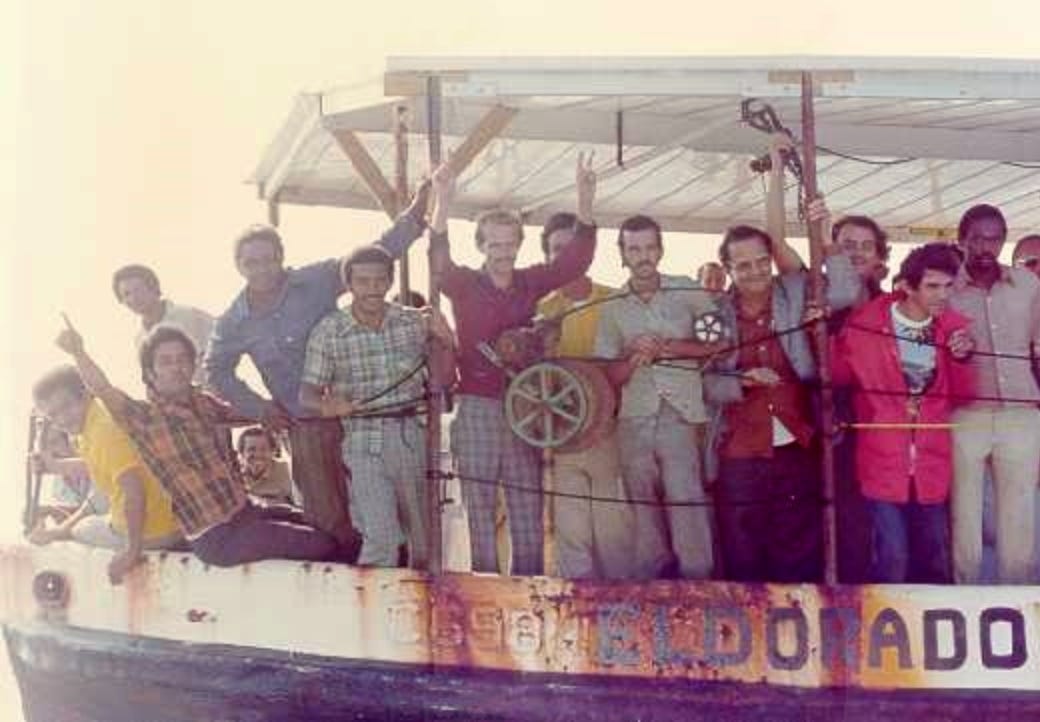


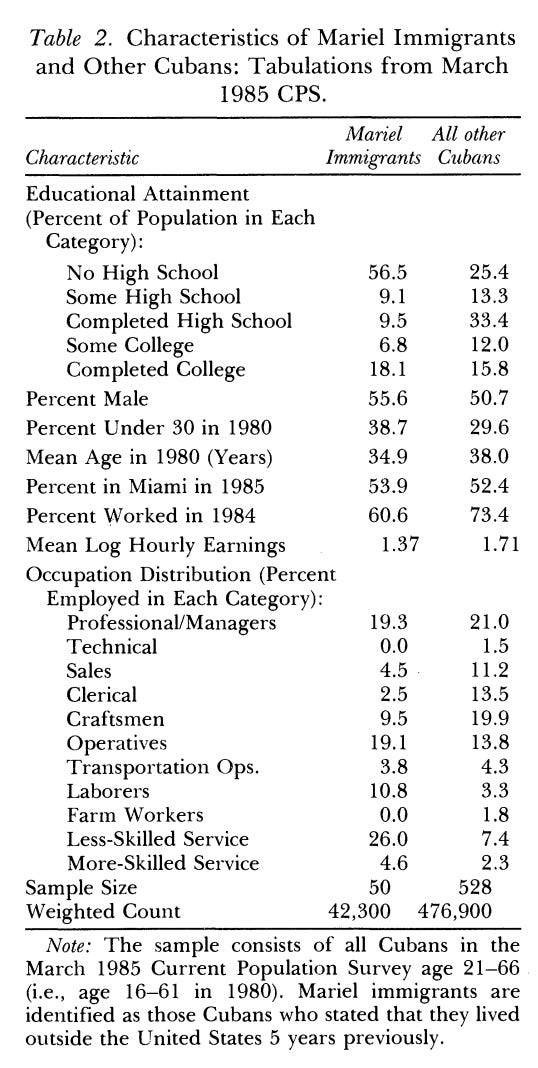
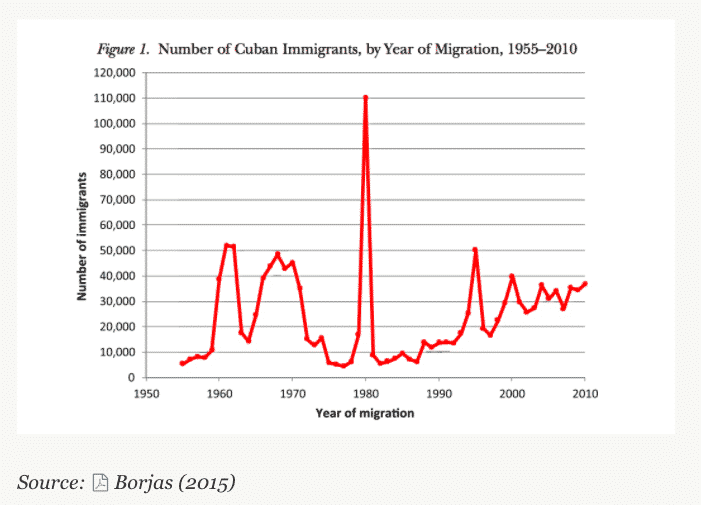
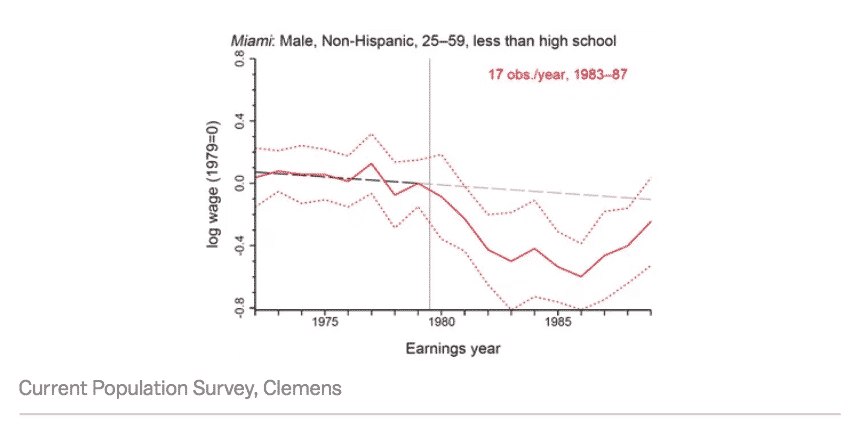
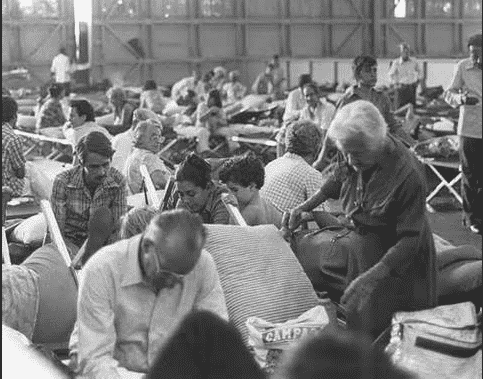
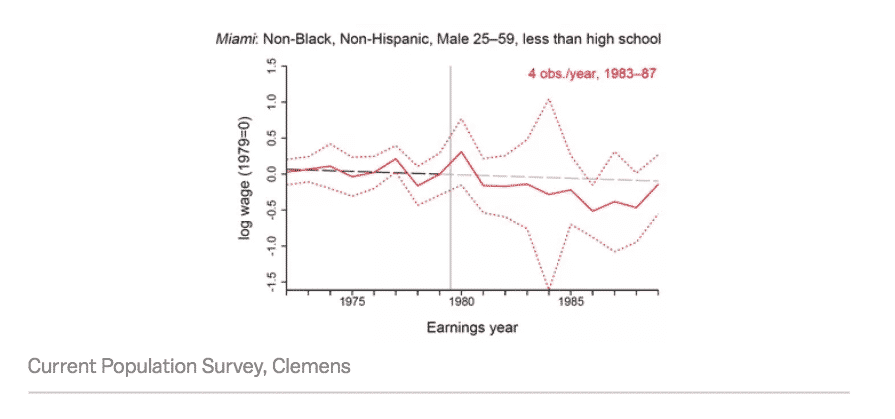
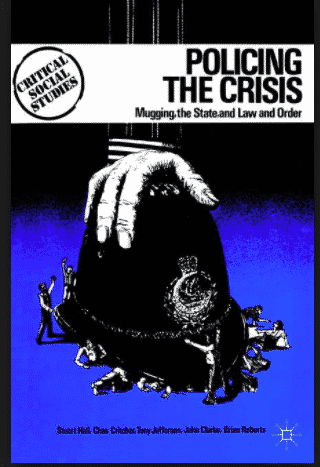
Why is economists being interested in learning general lessons about cause and effect from specific incidents a 'fixation'? That makes it sound like some kind of weird irrational thing, when as far as I can see it's a totally reasonable thing for economists to be concerned with. Like, you seem to be implying that Card as well as Borjas made some kind of error here, but it's not very clear from the text what this is.
What will it take to make those who write about economics and economists to recognize that there is no such thing as a Nobel Prize in Economics?
The Prize in Economics was initiated and is funded by the Swedish Central Bank (Sweden's Fed)and has no funding from the Nobel Foundation.
The certicates and medals do not mention the phrase "Nobel Prize."